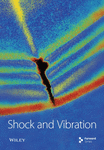The PolyMAX Frequency-Domain Method: A New Standard for Modal Parameter Estimation?
Abstract
Recently, a new non-iterative frequency-domain parameter estimation method was proposed. It is based on a (weighted) least-squares approach and uses multiple-input-multiple-output frequency response functions as primary data. This so-called “PolyMAX” or polyreference least-squares complex frequency-domain method can be implemented in a very similar way as the industry standard polyreference (time-domain) least-squares complex exponential method: in a first step a stabilisation diagram is constructed containing frequency, damping and participation information. Next, the mode shapes are found in a second least-squares step, based on the user selection of stable poles. One of the specific advantages of the technique lies in the very stable identification of the system poles and participation factors as a function of the specified system order, leading to easy-to-interpret stabilisation diagrams. This implies a potential for automating the method and to apply it to “difficult” estimation cases such as high-order and/or highly damped systems with large modal overlap. Some real-life automotive and aerospace case studies are discussed. PolyMAX is compared with classical methods concerning stability, accuracy of the estimated modal parameters and quality of the frequency response function synthesis.




